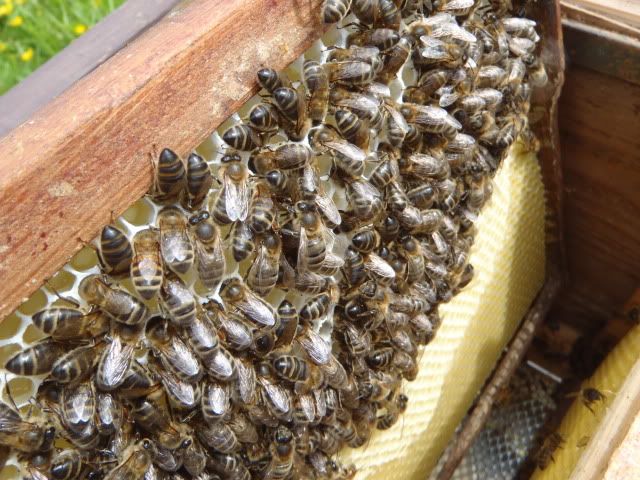Can anyone identify the strain of bees I have? I think they are Carniolans.
My dad had 4 colonies of these bees last year and had 9 or 10 swarms. Despite getting up to 6 colonies by September, he finished the year with 4. The colonies seem to want to swarm more than once, but the swarms are not very viable as new colonies for some reason. The bees themselves are very mild mannered.
The history:
2007 obtained a nuc early in the season from keeper A. Built it up and got a good crop of honey by late season. A fairly dark bee
2008 Got another two colonies from keeper B. Split to obtain 2 nucs. Cant remember what the swarming tendencies were that year. I’d need to get my dads diaries to check.. honey crop was not great from six colonies
2009 Started the season with 5 colonies. Had large number of swarms. Honey crop was good.
2010 Started off with 4 colonies. Had many, many swarms. Ended up with six colonies of which 4 survived till the end of the season.
2011 Only two of the colonies made it to March this year. One has grown very quickly and swarmed twice. I think I may have stopped the other from swarming – time will tell.
When I checked the 1st swarm yesterday, there was no queen, no eggs and no larvae in the hive. There was a few bits of pollen. The bees had filled some cells with nectar and probably the syrup I had given them. There was a queen cup on one of the frames. In total allowing for the bees that were out and about, I think they would cover about 3 frames, which seems to me to be a lot less than I put in there last week.
I checked the large hive thoroughly. There was no sign of a queen; no eggs and only a handful of sealed brood and very little pollen. There was plenty bees though, brood chamber was full as was the super I am also using as a brood chamber. The honey super was full of bees and still contains a good amount of honey some of which is sealed. In this hive I found a large number of opened queen cells and 2 further queen cells. One was actually hatching during my inspection and the other was sealed. I decided to put the frame containing the sealed QC into the original swarm and then watched the second queen hatch.
The 2nd smaller swarm in the nuc contained barely a frame of bees and no queen. I’ll combine this with the original swarm later this week
Have I done the right thing?





 Reply With Quote
Reply With Quote



Bookmarks